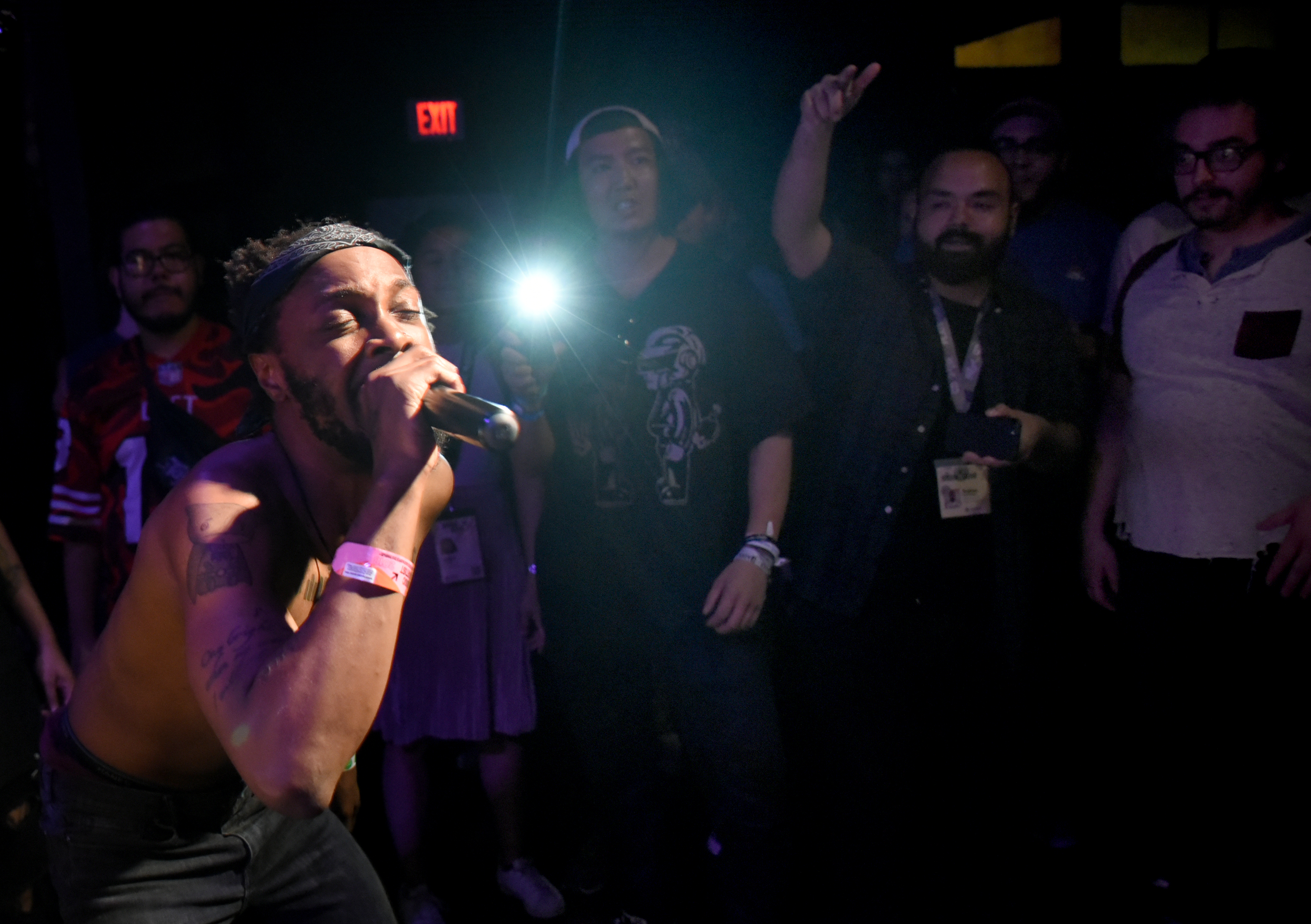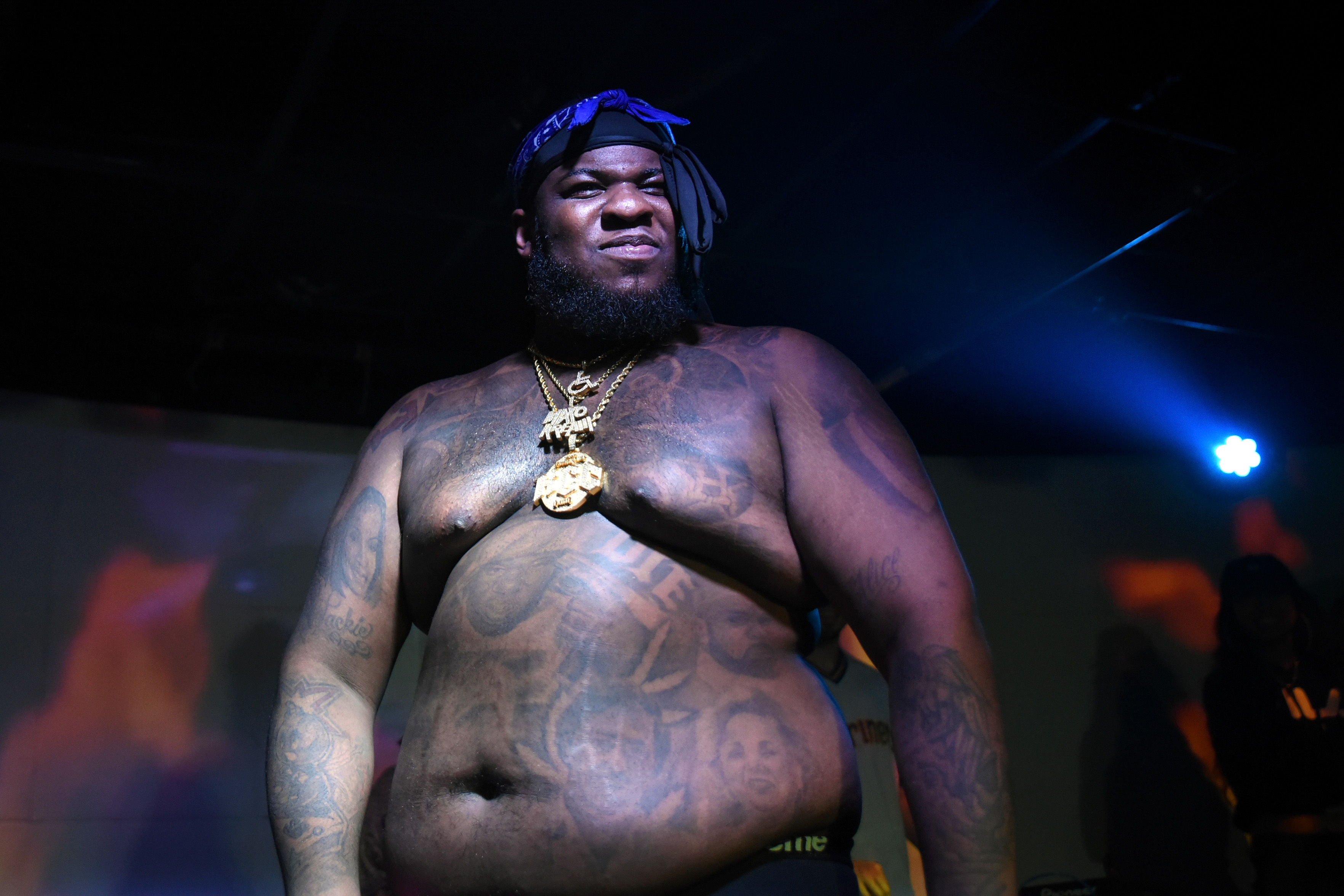I was somewhere in the intestines of the Hype Hotel, watching a rapper contemplate the apocalypse over a sample of Passion Pit, when the disgust began to take hold. A prisoner of my own device, I spat out an ulcerous Doritos Locos taco and trashed my acrid mystery cocktail glowing electric Jonestown Red. The rapper on-stage bragged about “being in the lab like Bill Nye, the Science Guy.” Someone live blogged in a corner. I was offered a free pair of headphones in exchange for signing a blood pact to brand my first-born son, Sol Republic Weiss. It was 1:30 AM on a spring night in 2012 and I vowed to never return to SXSW.
Sometimes, you’re struck with the nacho-flavored revelation that you are the problem. There are countless candidates for worst industry, but the music business is right up there with nuclear power lobbyists, subprime mortgage brokers, and animated Dalmatian slaughterers. If the best music aspires towards an unalloyed purity, its business side has zero qualms about offering 360 deals to 16-year olds, buying them Xanax birthday cakes, and dumping them in the desert inside an oil drum at the first sign of diminished buzz as a 37-year old white executive shouts “GANG!” SXSW became a vessel for that sinister toxicity. If it’s genesis traced back to late 80s DIY indie-rock culture, it mutated into a three-eyed fish with a temporary Skull Candy tattoo, the world’s largest collective Klout thirst trap, where industry executives glad-handed, journalists frantically created hype that lasted as long as a WeTransfer link, and major label stars parachuted in for perfunctory 13-minute sets. It spawned a film festival, a Vegas spinoff for startups, and an Interactive conference where the Tech bros failed to invent an App to make all the tech bros disappear.
Austin was no longer weird: it was washed. At least during that endless spring break where Frito-Lay dreamed the world’s largest vending machine stage, Chase Bank swooped in to siphon off some cool, and rappers flung mixtapes at you like Frisbees. Then there was tragedy, which occurred in 2014 when a drunk driver fleeing the cops plowed through the teeming crowds, killing four and injuring 20 more. It was a gruesome accident, one that sadly felt inevitable.
This is a long and circuitous way to say that SXSW has somehow recovered, at least for now. It’ll never return to its semi-Edenic roots of smoked brisket, ingenious undiscovered bands, and illimitable Lone Star beer. It’s also likely that I’m still the problem. But it’s no longer the dystopian avatar for late Capitalism’s inexorable arc towards algorithm-created music presented by the taste-making algorithms of an off-brand streaming company—co-sponsored by Bud Light Lime-A-Rita.

It’s not all good, though. This year, you couldn’t avert your eyes from noticing something called the “Tinder Swipe Sessions.” Nor could you ignore the grim cognitive dissonance of suffering homeless veterans sprawled and rotting underneath the I-35 overpass, while dozens of people blithely goose-stepped to the Fader Fort. Later, Statik Selektah rhapsodized about the glorious content that only Netflix can supply before a crowd anxious for a rumored Nas cameo that never materialized.
We’ll remember this tumorous epoch in 2018 for its infinite distraction, myopic Techno-Utopianism, blind faith in one-dimensional statistical metrics, and the curdled cheddar Caligula entombed inside the White House. We’ll also remember the diamond-clustered perfection of Young Thug and Future’s 2012-2016 runs. But if there is a point to this pointlessness, it’s to savor any improvement, however gradual.
If media caterwauling about the corporate idiocy in Austin scared off carpet-bagging superstars, unnatural crowds, and the prospect of a Goldman Sachs Soundcloud stage where you could sign up for a Gucci Gang credit card with 27 percent APR, then so much the better. It’s a victory for the powers of misanthropy. Punk lives, or something. And look, I’m not here to tell you that there isn’t something patently absurd about the entire endeavor, but there is something patently absurd to almost everything in a world where an ex-adult star named Stormy may or may not contain a JPG dossier of presidential dick. So it grows.
The rare moments are becoming increasingly rare, which is partially a function of age, but also a function of the interchangeable nature of hyper-corporate life (*extremely Julian Casablancas voice). Coachella is Bonnaroo with palm trees, which is Coachella with mud, which is Lollapalooza with Kardashians. By its sheer glut of permutations and international acts that still congregate in Austin, SXSW will always have an advantage over much of the major festival circuit. As a bonus, it’s unlikely you’ll meet someone who tells you that they’re pretty sure that they’re a shaman.
In the meantime, there is vernal Texas in that serotonin-flush first weekend in March after the clocks shift. There is G Perico rapping about “How to Survive in South Central” in a jheri curl at the Fader Fort, crossing out every other set and channeling the hedonistic trinity of Too Short, Quik, and Eazy-E. Or Raekwon briefly hypnotizing the crowd with ancient spells about hunger and cocaine before SOB X RBE snarled “Paramedic!” in hoodies. That was just a few hours.
There is Nardwuar in real-life, Canadian rap unicorn, the man who memorized the universe. He knows everything about me. He knows everything about you. He knows everything about YBN Nahmir’s uncle’s brother’s sister’s mother. Give him all the Street Pulitzers or a bronze monument on 6th Street. Doot do.

It is Texas and Texas will never let you forget that. So Maxo Kream manifested almost everywhere, shirtless and rotund, rattling off effortless but tangled catechisms about growing up Hoover in Houston. Trae the Truth conducted codeine spirituals to honor the Screwed Up Click. Bun B was there because this is the law and he is the governor and sometime headliner, and some traditions should never be altered.
In past years, a Kanye, Drake, or Prince inhaled all available oxygen. In this one, Rae Sremmurd ranked among the biggest acts, which is probably the festival’s sweet spot. Still big enough to be the Black Beatles, but not so large that everything strained like it was about to collapse. Please play “Perplexing Pegasus” at my funeral or my ascension to heaven—whichever one comes last. There was rap with direct fidelity to the four element traditionalists at the Stones Throw showcase, courtesy of Homeboy Sandman and Edan, teasing cuts from their very raw just-announced new album that sounded like they’d received prophecies from the Kool Herc oracle at Delphi. I tried to see Young Dolph that night, but the show got canceled due to Dolph allegedly getting arrested, which is arguably the platonic Dolph performance.
A G.O.O.D. Music party in a mansion in the hills above Austin wound up being a one-man showcase for Valee. There were boxes of Domino’s Pizza, a fridge full of cheap beers, and Kanye’s latest signee proving why he might be Kanye’s best signee. In house shoes, he rapped with a sneaky, wily rasp like he was about to steal a million dollar pack from a locked trunk with only a paperclip. The crowd knew every word to “Shell” and “Miami.” All I know is that I woke up with house slippers that weren’t mine and a box of Jenga—lightly used.

A Pitchfork daytime party yielded Kelela summoning old spirits in steam bath heat, ostensibly slowing her vocals to match the temperamental weather. Maybe JPEGMAFIA was the greatest revelation of all, fresh off florid Internet hype, but showing and proving as though this moment was long overdue, sweating bullets in overalls, so raw that a raptor could take tips (no Aubrey). In the digital void, his music is funny and abstract; in person, it’s bruising and immediate, the intensity underlying the subversion of the lyrics. If none of these things sound remotely appealing, there is always BBQ.
Our most basic tendencies are to either dismiss something forever or enshrine it in a permanent nostalgia. SXSW isn’t what it was, but it somehow reversed a seemingly inevitable decline. It’s a reminder that most extreme fevers eventually settle into a functional equilibrium, ideally one with good rap music. At this point, I’ll take what I can get, unless it’s a Doritos Locos taco.
Jeff Weiss is a writer based in Los Angeles. Follow him on Twitter.
This article originally appeared on Noisey US.






























